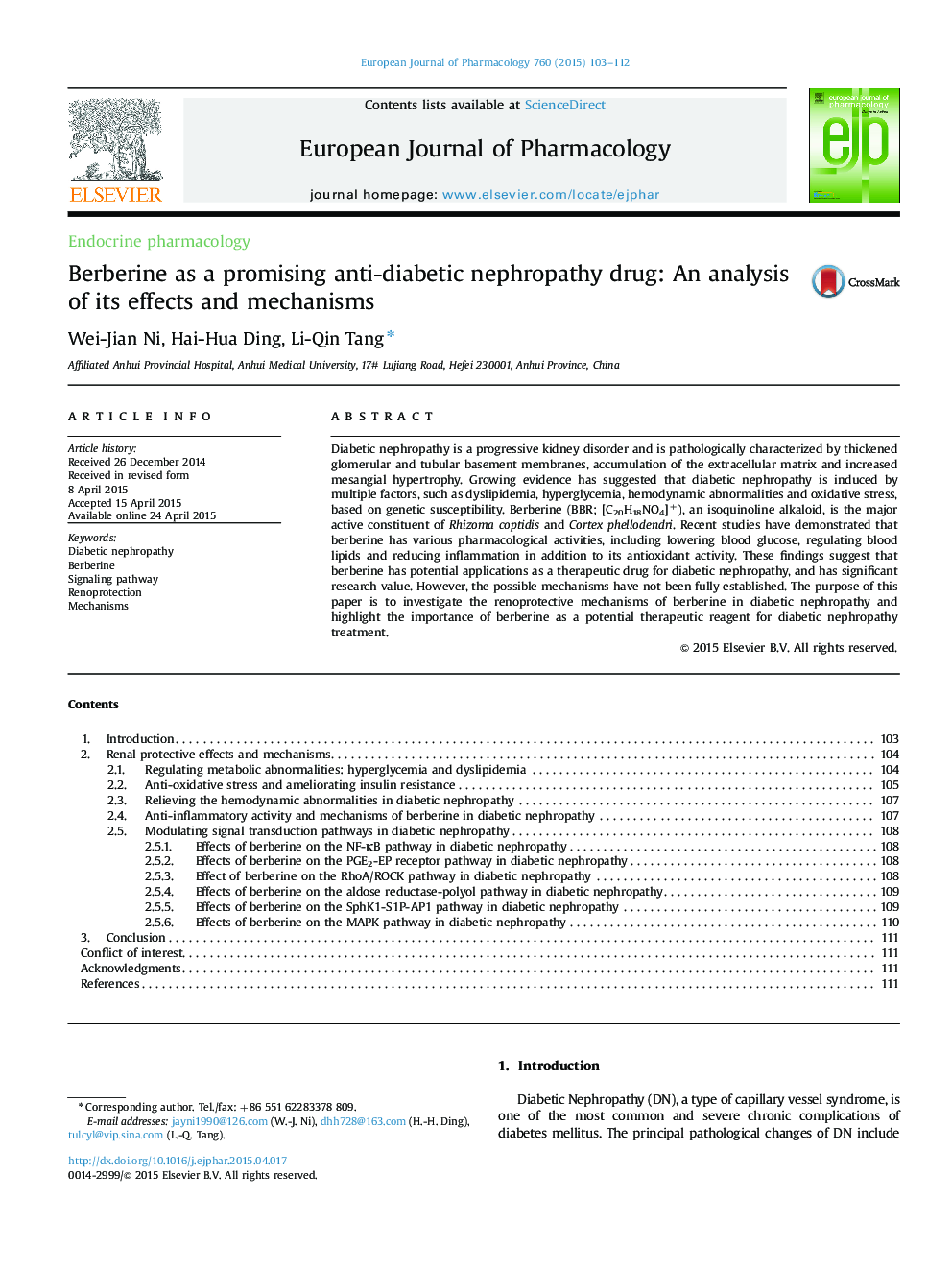| Article ID | Journal | Published Year | Pages | File Type |
|---|---|---|---|---|
| 2531445 | European Journal of Pharmacology | 2015 | 10 Pages |
Diabetic nephropathy is a progressive kidney disorder and is pathologically characterized by thickened glomerular and tubular basement membranes, accumulation of the extracellular matrix and increased mesangial hypertrophy. Growing evidence has suggested that diabetic nephropathy is induced by multiple factors, such as dyslipidemia, hyperglycemia, hemodynamic abnormalities and oxidative stress, based on genetic susceptibility. Berberine (BBR; [C20H18NO4]+), an isoquinoline alkaloid, is the major active constituent of Rhizoma coptidis and Cortex phellodendri. Recent studies have demonstrated that berberine has various pharmacological activities, including lowering blood glucose, regulating blood lipids and reducing inflammation in addition to its antioxidant activity. These findings suggest that berberine has potential applications as a therapeutic drug for diabetic nephropathy, and has significant research value. However, the possible mechanisms have not been fully established. The purpose of this paper is to investigate the renoprotective mechanisms of berberine in diabetic nephropathy and highlight the importance of berberine as a potential therapeutic reagent for diabetic nephropathy treatment.
Graphical abstractFigure optionsDownload full-size imageDownload high-quality image (167 K)Download as PowerPoint slide
